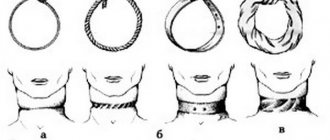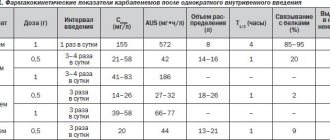Home — For the public
- Map of medical organizations
- Vaccination
- Clinical examination
- Fluorography
- Addresses and opening hours of clinics
- Emergency rooms
- Oncology
- Where to take an HIV test
- Healthy child's office
- Services
- Prevention of CVD
- Disease Prevention
- World Patient Safety Day
- Newspaper "Medical News"
- specialist
- School of Health
— Disease prevention
- HIV infection
- All about vaccination
- All about proper nutrition
- Hepatitis
- Flu
- Dementia
- Schoolchildren's health
- STD
- Tick-borne encephalitis
- Whooping cough
- Measles
- Legionellosis
- Meningococcal infection
- Oncology
- Acute intestinal infection
- Pediculosis
- First aid
- Pneumococcal infection
- Pneumonia
- Prevention of rabies
- Dependency Prevention
- Rotavirus infection
- Diabetes
- Cardiovascular diseases
- Injuries
- Tuberculosis
- Tularemia
- Physical activity
- Obstructive pulmonary disease
- Exotic infections
- Ecology
- Why is swimming in ponds dangerous?
- HIV infection
- Express help
- HIV is not a death sentence
- HIV prevention
- Interesting about HIV
— Prevention of HIV infection — HIV therapy: where to prescribe and how to take it?
Today, HIV infection is completely incurable. But timely and well-chosen highly active antiretroviral therapy (HAART) successfully curbs the progression of the disease and its transition to the AIDS stage. Taking therapy allows an HIV-infected patient to live a full life - study, work, start a family, do what he loves, and even have healthy children. If HIV is detected in a timely manner, the virus is not detected in the blood while taking therapy, the person is safe for others, and the infection does not affect life expectancy.
Every year new drugs are developed to combat HIV.
What is antiretroviral therapy?
Highly active antiretroviral therapy is a modern method of treating HIV infection. It involves taking 3-4 drugs, the action of which is aimed at suppressing the immunodeficiency virus. The therapy pursues 3 vital goals at once.
- Virological – suppresses the self-reproduction of virus virions in the patient’s body.
- Immunological – maintains the stability of the immune system to form an adequate immune response.
- Clinical – inhibits the development of AIDS and related diseases, thereby increasing the quality of life and increasing its duration.
Refusal of therapy inevitably leads to complications and the development of AIDS. People living without therapy are faced with oncological pathologies and opportunistic infections that cause the development of tuberculosis, meningitis, encephalitis, pneumonia and other diseases. Life expectancy at the AIDS stage without treatment does not exceed 6-9 months.
When is therapy prescribed?
If previously ART was prescribed immediately after HIV was diagnosed, today this approach is considered outdated and erroneous. Therapy is prescribed only after the specialist determines the stage of the disease and assesses the condition of the patient’s body. If a patient starts taking medication too early, the virus will mutate and the effectiveness of the active ingredient will be reduced.
Antiretroviral therapy is prescribed in the following cases:
- Decrease in the number of T-lymphocytes to 350 cells/ml or less;
- Viral load exceeds 55,000/ml;
- Clinical stages 3 and 4 of HIV.
Patients with HIV are not only prescribed ART, but also given certain recommendations for maintaining health (diet, exercise, individual daily routine). It depends on the patient's vital signs. If recommendations are not followed, the effectiveness of treatment decreases and the disease begins to develop faster.
How anti-HIV therapy works
HAART is based on a combination of 3-4 drugs, the action of which suppresses HIV at all stages of development, including its mutations. The problem is that in addition to the ability to create its own copies (replication), the immunodeficiency virus is characterized by high mutagenicity - it is able to adapt to any unfavorable conditions, continuing to create its own replications and mutations.
“Self-improvement” allows him to develop resistance (resistance) to any drug, especially if the patient ignores the doctor’s prescriptions or unknowingly missed therapy. In this case, the effectiveness of treatment decreases sharply and does not give any result. In addition, the high resistance of the virus leads to the emergence of new strains that are already initially resistant to HAART.
Mutagenicity, resistance, the emergence of new strains, the ability to replicate - HIV virions try to “survive at any cost.” Therefore, taking just 1 drug cannot suppress their activity and inhibit the development of infection. To solve this problem, experts are constantly developing effective HAART regimens, which must be taken in accordance with a clear schedule.
ART regimens
Therapy is prescribed according to one of the existing regimens. The program must be selected by a specialist; self-medication is excluded. Schemes can be divided into 3 types:
- First-line regimens for patients who have not previously received therapy;
- Second-line regimens for correction of ART after first-line drugs;
- Third-line regimens (or "rescue regimens") are used to treat seriously ill patients.
The course of treatment can only be changed by the decision of the attending physician. Please note that even a well-chosen set of drugs has a temporary effect, since the virus can adapt and develop resistance. That is why patients must monitor their condition, and doctors must promptly adjust the treatment program.
Some time after starting ART, the number of T-lymphocytes begins to decrease, and the viral load, on the contrary, increases. This is a sign of mutation and adaptation of the virus, which means it is necessary to adjust the dosage or replace the drug.
How to take ART?
Antiretroviral therapy is carried out in compliance with the following principles.
- Medicines are taken at strictly defined times!
- You cannot skip taking medications!
- It is unacceptable to increase or decrease the dose of the drug on your own!
- Only a doctor prescribes medications, regimen and dosage of the drug!
During the treatment process, the composition of ART can be adjusted, which allows achieving maximum effectiveness of the treatment.
It is important to understand that questions like “should I take medicine today or not?” are not appropriate in this case. Of course, for obvious reasons, not every patient can comply with such a strict regime. But living with HIV without treatment is tantamount to a death warrant signed with one’s own hand, when a person has a choice and opportunities for salvation.
Where to prescribe medications for HIV?
The treatment of HIV infection is carried out by an infectious disease doctor at the Sverdlovsk Regional Center for the Prevention and Control of AIDS. The main thing to remember is that self-medication is not acceptable! If HIV is suspected and after confirmation of the diagnosis, treatment of the infection should be carried out exclusively by a specialized specialist.
Most HIV medications are on the list of vital and essential drugs. Therefore, the costs of treating patients are paid by the state - from the federal and regional budgets. The drugs are given to HIV-positive patients at the Sverdlovsk Regional Center for Prevention and Control of AIDS or in pharmacies with a prescription from the attending physician. To receive them, the patient must be registered with a dispensary.
What medications treat HIV?
For general information, we list the classes of drugs, their principles of action and drugs using a visual table.
| Drug class | Operating principle | Drugs |
| Nucleoside inhibitors* of reverse transcriptase | Suppress reverse transcriptase, an HIV enzyme that is responsible for creating DNA replications | Abacavir, Zalcitabine, Lamivudine, Stavudine, etc. |
| Non-nucleoside reverse transcriptase inhibitors | Affects reverse transcriptase | Nevirapine, Rilpivirine, Efavirenz, Elsulfavirine, etc. |
| Protease inhibitors | They block the virus protease enzyme, resulting in the formation of virions that are unable to infect new body cells | Amprenavir, Indinavir, Nelfinavir, Ritonavir, etc. |
| Integrase inhibitors | They block a viral enzyme that is involved in the process of integrating viral DNA into the genome of the target cell | Raltegravir, Dolutegravir, Elvitegravir. |
| Receptor inhibitors | Prevents HIV virions from entering the target cell | Maraviroc. |
| Fusion inhibitors | Block the last stage of penetration of HIV virions into the target cell | Enfuvirtide. |
*Inhibitors are substances that suppress the course of physiological processes.
Despite the importance and vital necessity of treatment, in some cases, patients may not adhere to the medication schedule, which makes therapy difficult and reduces its effectiveness. Therefore, today specialists are actively developing new HAART regimens that involve a single dose of the drug - 1 time per day. For a single dose, drugs such as Atazanavir, Abacavir, Didanosine, Tenofovir, Lamivudine, Emtricitabine, Efavirenz and other most modern antiretroviral drugs have already been approved.
Popular questions and problems HAART
Despite the fact that HIV has been studied quite well, for most people it remains a complete “mystery”. Often, neither HIV-infected people themselves nor those around them have reliable, understandable information about the virus, the course of the disease, treatment of the infection and possible consequences. Trying to fill in the knowledge gaps, they read dubious Internet publications, listen to the advice of people who were “miraculously cured,” turn to adherents of traditional medicine for help, etc. Such actions not only do not solve the problem, but also endanger the health and lives of people. We will try to solve the problem at least a little and answer the most common questions from patients and their environment.
Can I get infected if my partner is taking therapy?
Properly administered HAART inhibits the activity of the virus, so the risk of infection is minimal. But only if the HIV-positive patient has low or undetectable viral load in the body. If the viral load is high, the risk of infection increases.
Sexual partners should be informed of each other's HIV status. The presence of concomitant sexually transmitted infections, as well as hepatitis, increases the likelihood of transmission of infection by 3-5 times. Even if the viral load level decreases to 3500 copies of HIV RNA and below in 1 ml of blood, the risk of transmission of infection still remains. Therefore, sexual partners must use condoms for any form of sexual intercourse.
Can I drink alcohol during therapy?
Antiretroviral therapy drugs are not compatible with alcohol. Moreover! Drinking alcohol inhibits the functions of an already weakened immune system, creates an increased burden on the body and increases the toxic effect of inhibitors - drugs taken during HAART.
Is it possible to give birth to a healthy child if you take HIV therapy?
The use of competent HAART can reduce the risk of infection transmission to 2% or lower. Therefore, newborns from an HIV-infected mother have every chance of not inheriting the disease. Early diagnosis can be confirmed or refuted by timely diagnosis using the PCR (polymerase chain reaction) method. To do this, the baby's blood is examined twice - at the age of 1-4 months, and at the age of over 4 months. If both times the PCR results are negative, then we can say that the child was born healthy.
I was prescribed HAART, but it makes me feel worse, what should I do?
Antiretroviral drugs for the treatment of HIV have side effects, just like any medicine. Some side effects appear almost immediately. For example, a patient’s temperature rises, problems with the gastrointestinal tract, skin rashes appear, and the level of insulin in the blood increases. An HIV-positive patient may lose or gain noticeable weight. The resulting side effects create additional stress on the body. To avoid this, it is necessary to undergo regular examinations and, if necessary, adjust the HAART regimen. It is to correct, and not to refuse treatment!
Is it possible to become infected with HIV if you take therapy after a possible infection?
Taking antiretroviral drugs immediately after possible infection significantly reduces the risk of transmission of infection. It is very important to take the medicine within the first 2 hours after the “emergency”. Delayed use reduces the effectiveness of prophylaxis. And prescribing medication 72 hours after the fact of infection makes no sense at all. It is important to understand that only a specialist has the right to prescribe HAART for prophylactic purposes, since self-medication can be harmful to health.
My sexual partner has HIV, do I need to undergo therapy to avoid becoming infected?
A healthy person does not need to undergo HAART to prevent HIV. It is enough to use a condom during every sexual contact in any form.
It is important to know! The life expectancy of an HIV-infected patient depends not only on the effectiveness of HAART, but also on the general state of health and immunity. The body of people with strong immunity, who do not have a history of chronic diseases and congenital pathologies, is better able to resist the development of HIV infection. Conversely, a weakened body is unable to fight the virus. Therefore, in addition to antiretroviral therapy, a healthy lifestyle and proper nutrition are recommended for all HIV-positive patients. They must protect themselves from infectious and colds. Strengthen your immunity and be sure to undergo regular examinations of your body.
It is better to ask all your questions to the relevant specialists of the Sverdlovsk AIDS Center or to your attending physician at your place of residence.
Therapy for HIV infection
It has been 30 years since the discovery of the human immunodeficiency virus (HIV). The number of people living with HIV in the world exceeds 33 million. In the Republic of Belarus – 22,759 people (as of 10/01/2020). More than 2 million die every year. In total, more than 20 million people have died from HIV/AIDS in the world, 7,097 people in our country. In this regard, treatment and prevention issues are of strategic importance to control and contain the spread of this infection among the population.
Many leading scientific centers in the world are studying HIV infection, using the latest technologies and scientific discoveries, but many mysteries of the disease still remain unresolved. To date, it has not been possible to control and stabilize the HIV epidemic.
On the short path to the development of antiretroviral therapy (ART), there were both dizzying successes and unsuccessful attempts. For a long time, the most effective of all drugs with activity against HIV was azidothymidine (AZT), which began to be used in 1987. Its therapeutic effect is based on blocking the interaction of the virus with cells. The virus loses the ability to multiply, as a result, the number of viral particles in the body decreases and the number of blood cells responsible for immunity increases, the patient’s condition improves. However, the results of its use as a single drug did not live up to expectations, since HIV develops resistance to the drug during long-term treatment. The same thing happened with other drugs, reverse transcriptase inhibitors, which appeared in 1991-1994.
The lives of people with HIV/AIDS around the world have often followed an inevitable course - the destruction of the immune system, the emergence of infectious (opportunistic) diseases, exhaustion, destruction of the nervous system and death.
The emergence in 1996 of a new class of antiviral drugs, HIV protease inhibitors, and their combined use with drugs from other classes changed people's understanding of HIV/AIDS. Today's reality seemed impossible just 10 years ago. HIV infection has come to be viewed as a chronic disease that, although incurable, can be successfully controlled with lifelong medication. Mortality and morbidity rates have sharply decreased, and the quality and life expectancy of people living with HIV have increased.
Dosage forms of antiviral drugs that are more convenient to take have become available. There are already ART treatment regimens with once-daily dosing. Today, doctors have more than 43 medications for treating adults and 23 for treating children.
Treatment is carried out on a voluntary basis and requires the active participation of the patient, therefore, for persons who cannot or do not want to comply with the medication regimen, it is not advisable to prescribe treatment (there will be no effect). If indications for ART are identified, an additional examination of the patient is carried out for:
- confirmation of the need for therapy,
- clarifying the patient’s desire and readiness to be treated,
- identifying data indicating the presence of possible contraindications to ART or certain drugs.
Based on the data obtained, a final decision is made on the need for antiviral therapy for this patient. Its tactics, volume and composition are determined.
The treatment process is accompanied by patient counseling and psychological support, both from the attending physician and other persons (psychologist, peer consultant, close relatives). Today in our republic there are 18,542 people on ART, including 184 children. All persons who have indications for it and wish to be treated receive treatment. Treatment is free of charge. You need to take treatment for life. Every patient has the right to know why he was prescribed or not prescribed this or that treatment. The more the patient knows about the treatment, the better the long-term results will be. The physician shares responsibility for poor compliance with the treatment regimen with the patient.
HIV is a dangerous enemy, and doctors and patients need to fight it together.
HIV INFECTION - SOURCE OF INFECTION, ROUTES OF TRANSMISSION, PREVENTION AND PROTECTION MEASURES!
About the history of HIV infection
The inhabitants of our planet learned about the human immunodeficiency virus (HIV) in 1981. Almost simultaneously, the discoverers of the virus were Luc Montenier from the Pasteur Institute (France) and Robert Gallo from the National Institutes of Health (USA). But only two years later (in 1983), after the first cases of the disease were identified, the “Human Immunodeficiency Virus” (HIV) was isolated.
Since then, HIV has spread to almost the entire planet. Currently, according to official data, more than 33 million people are registered in the world; their real number is 5-10 times greater.
Every year, more than 2 million people in the world become infected with the HIV virus and the same number die from AIDS. HIV knows neither geographical nor national boundaries; it is equally merciless to both rich and poor.
This problem is also relevant for Belarus. Every year about 1,000 HIV-infected people are registered in our country, and in Minsk there are about 300 people. In terms of the prevalence of HIV infection, Minsk ranks third in the republic, after Gomel and Minsk regions.
In Minsk, the number of detected cases of HIV infection continues to increase annually. The main causes of infection in HIV-infected patients in Minsk in 2022 were: injection drug use - 33%, sexual transmission - 65.8%, of which 57.3% of patients were infected through heterosexual and 8.5% - during homosexual contacts. The majority of HIV-infected people are registered in 3 age groups: 30-34 years old - 29.7%, 25-29 years old - 26.1%, 40 years old and older - 18.9%.
What is HIV/AIDS?
HIV infection is an infectious process in the human body caused by the human immunodeficiency virus, characterized by a slow progression, damage to the immune and nervous systems, with the subsequent development against this background of opportunistic (concomitant) infections and neoplasms, leading to death in the HIV-infected person.
AIDS (acquired immunodeficiency syndrome) is the terminal stage of HIV infection, occurring in most cases after a very long period from the moment of infection with the virus.
Source of infection
The only source of infection is an HIV-infected person at all stages of the disease.
Modes of transmission of HIV/AIDS
There are three main routes of transmission:
- Parenteral route (through blood) - infection occurs through injection of infected drugs, use of unsterile needles and syringes, transfusion of contaminated blood, through undisinfected instruments for hygiene procedures.
- Sexual route - infection occurs through sexual contact with
- HIV-infected
Vertical, or intrauterine route - the virus is transmitted from an infected mother to a child during pregnancy, childbirth, and breastfeeding.
A high concentration of the virus that can infect a healthy body is contained in the blood, semen, and vaginal secretions. It is found in urine, saliva, and tears in low concentrations and is not dangerous in small volumes.
HIV is not transmitted
- with friendly kisses;
- when shaking hands;
- when coughing, sneezing;
- through dishes, clothes, linen;
- when visiting the pool, sauna, toilet;
- for insect bites.
Treatment of the disease
Over the past years, despite the efforts of various specialists around the world, huge amounts of money spent on research and treatment of the “plague” of the 20th century, no means have yet been found for carrying out preventive vaccinations and for radically curing infected patients.
The medicines available to doctors can only temporarily stabilize the condition of an HIV/AIDS patient, alleviate his suffering and prolong his life.
HIV among women
The HIV/AIDS epidemic is increasingly taking on a female face:
- almost half of all people living with HIV in the world are women;
- women are especially vulnerable to HIV infection and its consequences;
- the likelihood of contracting HIV for girls and young women is 2.5 times higher than for their male peers;
- Women are more likely than men to become infected with HIV even from a single unprotected sexual intercourse;
- the spread of HIV infection among women leads to an increase in children born to HIV-infected mothers; Most children become infected with HIV from their mothers during pregnancy, childbirth or breastfeeding.
Prevention and protection measures
- There are currently no specific means of preventing HIV infection in the world. Therefore, protection from this terrible disease in overwhelming cases depends entirely on the behavior and lifestyle of the person himself.
- The main condition for maintaining health and preventing infection is moral purity and loyalty to your chosen life partner.
- Always and everywhere use only personal hygiene items (toothbrushes, razors, blades, etc.).
- Avoid casual sex; If this occurs, be sure to use a condom.
- Do not have sex with people who use drugs.
- Accustom yourself and your partner to systematically and correctly use a condom; this will help reduce the likelihood of contracting AIDS, protect against sexually transmitted diseases and unwanted pregnancy.
- Do not use narcotic drugs.
- You can be examined for the presence of human immunodeficiency virus in the blood at any health care institution in Minsk, incl. anonymously, as well as in the HIV/AIDS Prevention Department of the Republican Center for Geology and Health (Klara Zetkin St., 4).
WHERE CAN YOU TEST FOR HIV IN BELARUS? IS THIS PAID?
In order to find out your HIV status, you need to donate blood for HIV. HIV testing is voluntary and, in most cases, free of charge. If you wish, you can be surveyed indicating your data, or anonymously.
Tests for HIV infection can be taken at any clinic in your city in the treatment room; for Minsk additionally - in the Minsk city and regional dermatovenerological dispensaries, city and regional narcological dispensaries.
In the treatment room of the HIV/AIDS prevention department of the State Institution “RCGEiOZ” (Minsk, K. Tsetkin St., 4, 3rd floor. tel.), you can do an HIV test anonymously for free, as well as get advice from specialists. The result of the HIV test will be ready within 2 working days.
HIV and AIDS: what's the difference?
Unfortunately, many people, despite the availability of information today, still believe that HIV and AIDS are the same thing, or cannot clearly explain what their differences are. So let's define the concepts of what HIV, HIV infection and AIDS are? And what are their differences?
HIV is a human immunodeficiency virus.
As a result of a person becoming infected with HIV, he becomes ill with HIV infection - a currently incurable, long-lasting infectious disease.
For a long time after infection, the presence of the virus in the body does not lead to any health problems and the person does not feel sick. Treatment of HIV infection is carried out using drugs that support the immune system. After years of existence of HIV in the body (for different people, the duration of this period can be different - from several years to 10 or more), the immune system is affected, and the human body loses the ability to resist not only the reproduction of HIV, but also other diseases and infections.
AIDS is acquired immunodeficiency syndrome. AIDS is the final stage of HIV infection, when a person’s immunity is weakened so much that other diseases that develop against the background of the disease take an irreversible course and lead to death.
At the moment, HIV infection continues to remain an incurable disease, but subject to a healthy lifestyle, medical supervision and medication, a favorable course of the disease and prevention of the development of AIDS is possible.
How can you get infected and how can you not?
Everyone probably already knows that there are three main routes of HIV transmission:
Sexual intercourse without a condom with an HIV-infected person;
Sharing of injection equipment, especially among injection drug users;
Vertical transmission of HIV from an HIV-infected mother to her child (during pregnancy, childbirth or after childbirth through breast milk).
If we consider the bulk of cases of HIV infection, all other modes of transmission are much less common. Among them, it is worth noting HIV infection through transfusions of donor blood or its products in countries where mandatory testing of all donated blood samples for HIV has not been introduced. Cases of infection when infected blood comes into contact with an open wound or mucous membrane, as well as through a bite, are extremely rare. For this reason, you should not share razor blades and toothbrushes, use untreated foreign manicure accessories, or apply a tattoo with a non-sterile instrument. HIV is not transmitted through everyday household contact, such as sharing a bathroom and toilet, drinking from the same cup, or friendly kissing. In medical institutions, there have not been a single case of infection of a health care worker after contact with saliva, urine or blood of an HIV-infected patient on intact skin. HIV is not transmitted through blood-sucking insects.
Monitoring compliance with the sanitary and anti-epidemic regime, carried out constantly in dental clinics and medical centers, excludes conditions for HIV infection.
Around the world, no more than a few dozen cases of HIV infection during oral sex have been recorded. Mostly, these cases of HIV transmission involve ejaculation into the receiving partner's mouth. The inserting partner comes into contact only with safe saliva that does not contain a dose of HIV sufficient to cause infection. In addition, saliva contains substances that have an antiviral effect. The chances of getting pathogens of some sexually transmitted infections during oral sex are much higher: syphilis, gonorrhea, genital herpes and human papillomavirus, incl. and oncogenic types 16, 18.
How long can you live with HIV?
The duration of progression of HIV infection to the transition to the AIDS stage is individual for each person and depends on the initial state of the immune system and the properties of the virus itself.
Today, thanks to the availability of specific antiviral therapy, the progression of the disease can be stopped at any stage. How long can you live with HIV while receiving specific treatment? If it is effective and started on time, and the patient is adherent to it, it is believed that life expectancy will not differ much from the national average. We have examples that people with HIV live 24 years from the moment the infection is detected, receiving treatment in recent years. However, there are also opposite examples... Large-scale treatment of HIV infection in Belarus has been carried out for 8 years and it is too early to draw any categorical conclusions. But one thing can already be stated - a person taking ARV therapy lives, works, gives birth to children, feels full, and has a future.
What is ARV, who should take it, for how long, can it be stopped?
Antiretroviral therapy (ART) is a specific antiviral treatment for HIV infection. The basic principle of ART is a combination of drugs belonging to different classes. This treatment leads to disruption of the HIV reproduction (replication) cycle, which reduces the number of virions in the blood - the viral load, thereby stopping the progression of the disease - the development of immunodeficiency. The number of viral particles is reduced to an undetectable level, i.e. below the detection threshold of the test system, but ART cannot yet completely remove the virus from the body or cure HIV infection.
There are currently 6 classes of antiretroviral drugs. Treatment is provided to everyone who needs it and is committed to such treatment. Currently, more than 18,500 people are on ART in Belarus. Treatment for HIV infection, as well as other infectious diseases, is free in Belarus. This is very important for patients. After all, such treatment is prescribed not for a year or two, but for many years, often for life. Lifelong treatment for HIV infection costs, on average, $35 thousand per person.
It is important to start treatment on time, before the body’s immune system is severely damaged. The criterion for prescribing ART is the very fact of HIV infection, i.e. treatment is indicated for everyone. Treatment cannot be interrupted. Sometimes, with the development of adverse reactions or resistance (resistance) of HIV to drugs, it is necessary to change the treatment regimen, i.e. replace some medications with others.
In exceptional cases, with the development of serious adverse reactions that are life-threatening, treatment is stopped.






